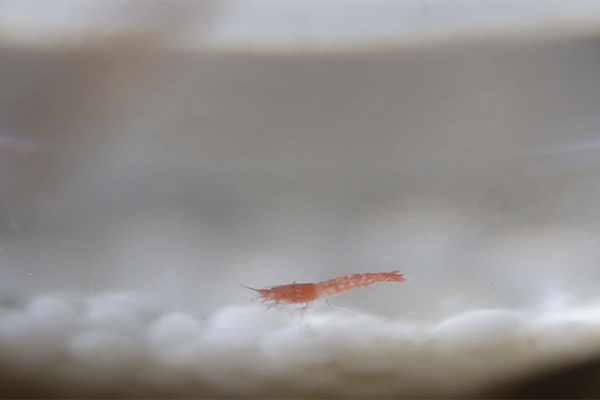Two-time CAF grantees (2018-19), Amy Jones and Paul Healey received a joint grant to curate a digital free-to-use images of animals while traveling with the aim to raise awareness about these animals’ plight. The project, Moving Animals, includes an interactive website hosting a layout of photos featuring abused, farmed, feral and abandoned animas around the world and went live March 19, 2019.
The two were recently in Cambodia and filmed undercover footage at an open-air slaughterhouse in Cambodia’s capital, Phnom Penh, where an estimated 600 pigs are killed every night. British daily paper The Guardian wrote an article called “Secret slaughterhouse video reveals brutal treatment of pigs in Cambodia” for their Farmed Animal Series, which included their undercover video and it now has over 12,000 views on YouTube.
Around the same time, board member and multiple-year grantee Jo-Anne McArthur, contributed to another piece for The Guardian’s Farmed Animal Series about pig slaughterhouses in Thailand called “Death by clubbing: the brutality of Thailand’s pig slaughterhouses.”
Please be warned, what you are about to read is challenging and gruesome.
The footage shows the workers operating in pairs: one worker uses a metal rod to pummel the pig’s head, before the other slits the pig’s throat. In order to get this footage, Healey and Jones had to rent a small, single apartment room that overlooked the open slaughterhouse. They arrived there at 10 p.m., before the killing was due to start.
“We set up the room by covering the window with a thick black cloth, so that when the killing began, the workers would not see us if they happened to glance up,” Jones says.
Healey and Jones explain that the first few hours everything was “quiet.” The pigs lay close to one another, likely exhausted from what would have been a horrific journey from across Cambodia or neighboring countries.
“We were careful not to get emotionally attached to any of them, but one caught Amy’s eye,” says Healey. “He kept standing to explore the pen, sniffing in the corners or biting on the metal bars. But he would return to the same pig to lie down and rest his head on him every time. This small act of tenderness between the two pigs stood in achingly sharp contrast to what was about to happen to them.
Before the killing began, buyers arrived and chose their pigs by marking them with thick colored marker pen. These animals were the first to be slaughtered. That’s when the screams started. “All we could hear were the screams, and the thump of the bat hitting the pigs’ heads. That sound has stayed with us.”
Slaughterhouses and the business of killing doesn’t just exploit non-human animals. This is an industry that thrives off desperation. Workers in slaughterhouses all over the world are subject to hazardous conditions and illness but many employees do not see a way out. Healey and Jones explain that not only were the workers themselves affected, but the community around the facility as well.
“The walls of the slaughterhouse are formed by apartment buildings, and so for many of the families living there (and their young children), their only window directly overlooks the killing floor,” Jones continues, “The proximity was shocking; these crowded apartment rooms are filled with the stench of animal feces, and the residents’ sleep is punctuated by the screams of dying animals throughout the night.”
“We were also struck by the emotional violence inflicted on the slaughterhouse workers,” she continues. “Footage showed one worker repeatedly looking away as his colleague slit the animals’ throats.”
In a recent article by the Phnom Penh Post, Cambodia’s agriculture director has said that this method has an effect on the workers that “the knives, the blood and the killing traumatizes them.” The worker who slits the pigs’ throats is paid more than the other employees.
While in Cambodia Healey and Jones were able to work with and meet other activists, and in their opinion, “there was certainly a feeling that the movement is growing.” However, they opine, “Activists within the country are generally keen to remain anonymous to protect their safety, and so we were lucky that we were able to document and leave the country to release the footage.”
The pair are working with an organization called Epic Animal Quest, who work tirelessly to end the dog meat trade in Cambodia, as well as spreading awareness about the cruelty that other animals endure as part of the livestock industry. “Although the main aim of our work is to encourage people to stop eating animals, we are grateful if our work can help to implement stronger animal welfare laws throughout the country in regards to slaughter methods.
They continue, “There is no ‘humane’ way to kill an animal, but the methods used currently are particularly brutal, and so we are also working with the Asia for Animals Coalition, and their 600-member organization, to urge the government to abolish and improve upon the current methods.”
The two explain how this misery isn’t just in far-away countries, as Jones and Healey explain, “This inherent suffering in the killing of animals exists in every slaughterhouse around the world, and so we took this footage to help shine a light on the individuals suffering for our food choices. The Guardian article allowed us to call for people to leave animals off their plates in one of the most-read and respected news platforms in the world. By ensuring that this awful narrative received press-attention, we wanted to spread awareness so that consumers can learn about the cruelty that is often hidden from them.”
When asked how they can cope with bearing witness to such atrocities, Healey and Jones responded, “Now more than ever, we are very aware that just witnessing such brutality can be emotionally damaging, and so we’re careful to take a break to process everything when we can. Often, it’s the thought of what impact our visuals can have that helps us cope and be able to look forward. And of course, we take inspiration and drive from the other documentary activists who are producing impactful work.”





